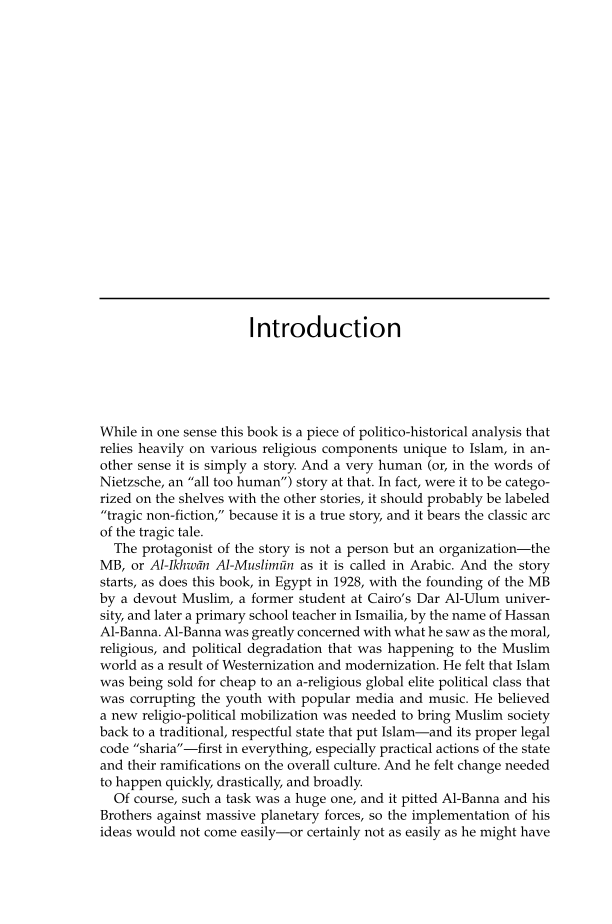Introduction While in one sense this book is a piece of politico-historical analysis that relies heavily on various religious components unique to Islam, in an- other sense it is simply a story. And a very human (or, in the words of Nietzsche, an “all too human”) story at that. In fact, were it to be catego- rized on the shelves with the other stories, it should probably be labeled “tragic non-fiction,” because it is a true story, and it bears the classic arc of the tragic tale. The protagonist of the story is not a person but an organization—the MB, or Al-Ikhwa ¯n Al-Muslimu ¯n as it is called in Arabic. And the story starts, as does this book, in Egypt in 1928, with the founding of the MB by a devout Muslim, a former student at Cairo’s Dar Al-Ulum univer- sity, and later a primary school teacher in Ismailia, by the name of Hassan Al-Banna. Al-Banna was greatly concerned with what he saw as the moral, religious, and political degradation that was happening to the Muslim world as a result of Westernization and modernization. He felt that Islam was being sold for cheap to an a-religious global elite political class that was corrupting the youth with popular media and music. He believed a new religio-political mobilization was needed to bring Muslim society back to a traditional, respectful state that put Islam—and its proper legal code “sharia”—first in everything, especially practical actions of the state and their ramifications on the overall culture. And he felt change needed to happen quickly, drastically, and broadly. Of course, such a task was a huge one, and it pitted Al-Banna and his Brothers against massive planetary forces, so the implementation of his ideas would not come easily—or certainly not as easily as he might have
Document Details My Account Print multiple pages
Print
You have printed 0 times in the last 24 hours.
Your print count will reset on at .
You may print 0 more time(s) before then.
You may print a maximum of 0 pages at a time.
















































































































































































































































































































































































